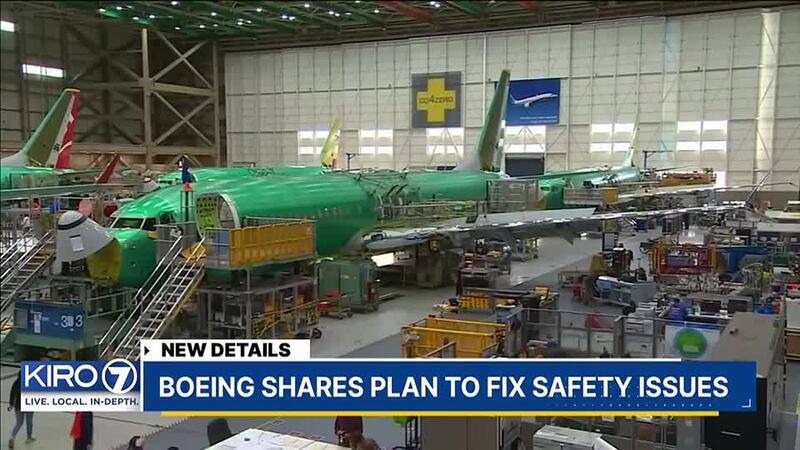WASHINGTON, D.C. — Boeing has laid out its Safety and Quality Plan to the FAA. The plan was required by the FAA after an audit back in February found serious issues within the company.
Boeing was given 90 days to come up with a plan and during a three-hour meeting on May 30th presented its plan.
The company did not release the full plan but provided an eleven-page executive summary outlining how it plans to address quality assurance and safety issues. Boeing said the plan generally fits into four categories of actions:
- Invest in workforce training
- Simplify plans and processes
- Eliminate defects
- Elevate safety and quality culture
“After the Jan. 5 accident involving a 737 airplane, we took immediate containment and mitigation actions to ensure airplane safety. We also made the decision to slow production as we took a hard look across every facet of our operations,” CEO Dave Calhoun said in a statement. “We listened to our employees, engaged transparently with our regulator, welcomed the findings and recommendations from the FAA’s ACSAA panel review, and invited scrutiny from customers and independent experts. Based on that feedback and oversight, today we presented to the FAA our comprehensive plan to strengthen our safety management, quality system, safety culture and ODA responsibilities.”
KIRO 7 spoke with Boeing Whistleblower Ed Pierson who said the information in this plan isn’t anything new and he’s seen this before.
“I’ve heard and seen those similar phrases many, many times they just stitched them together,” Pierson said. “Almost exactly like we’ve seen in previous PR statements investor statements the general sense is talk is cheap.”
FAA Administrator Mike Whitaker said that since the door plug blew off that Alaska Airlines flight back in January, they’ve increased the amount of inspectors in Boeing’s facilities and production of the 737 remains capped to 38.
“The flying public should feel that we’re increasing our oversight to an appropriate level with Boeing,” Whitaker said. “We certify each aircraft right now coming off the line, so we’re ensuring those aircraft are safe, we’ve increased our oversight and Boeing on its own has reduced production levels to make sure they have the resources they need.” Pierson said the company needs to do less talking and take more action to create real and lasting change.
“Talking about improving quality and actually doing it are two different things,” Pierson said. “We were always hearing that they’re going to improve training, improve training and in some cases they did but in many cases, they tweaked it called it a big change and it really wasn’t.”
The FAA said it will measure key performance indicators like tracking how many employees are staffed to commercial programs like the 737 and how many hours have been spent per plane in rework. However, Pierson said that only tangible actions will prove that Boeing truly has turned a corner.
“We want to see the company actually stop production and fix problems in position don’t allow the plane to get pushed down the line that just injects risk,” he said.
©2024 Cox Media Group








